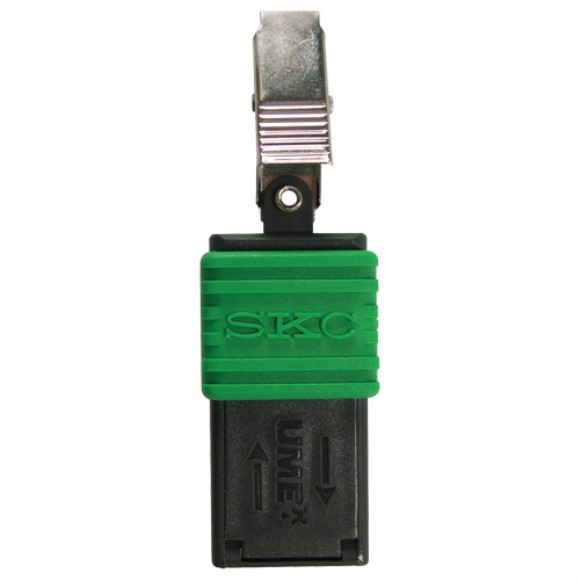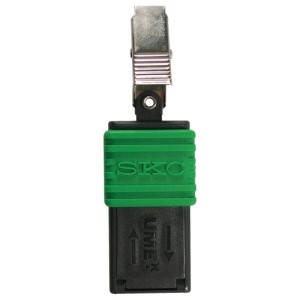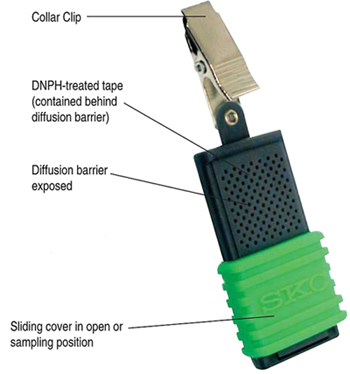UMEx 100 Passive Samplers, for Formaldehyde, Pk/10
UMEx 100 Passive Samplers, for Formaldehyde, Pk/10 Overview
UMEx 100 Passive Sampler for Formaldehyde; detection range from 5 ppb to 5 ppm; 15-minute to 24-hour samples and 7-day samples (sampling periods between 24 hours and 7 days have not been evaluated); single use only, pk/25
Limited shelf-life; storage at ≤ 39.2 F (4 C) required.
Meets OSHA Method 1007 specifications
If sampling in an atmosphere containing formalin, visit www.skcinc.com/knowledgecenter and search on “formalin”.
The convenient UMEx 100 Passive Sampler features sensitive method-validated chemistry for detection of low levels of formaldehyde. The single-use UMEx 100 contains a tape treated with 2,4-dinitrophenylhydrazine (DNPH) for reliable collection. Sampling rates are validated from 15 minutes to 24 hours or 7 days. Analysis is performed by high-performance liquid chromatography (HPLC).
Performance Profile
|
Sampling Rate for Formaldehyde
|
28.6 ml/min with a RSD of 7.6% at wind velocity of 5 to 100 cm/sec for 15 minutes to 24 hours See the More Information tab for UMEx 100 sampling rates for other aldehydes. |
|
Detection Principle
|
Formation of stable DNPH-hydrazone in the presence of formaldehyde |
|
Validation Range
|
0.06 to 3.0 ppm |
|
Lower Detection Limits
|
15 min: 200 ppb (0.24 mg/m3) 8 hrs: 5 ppb (0.006 mg/m3) 24 hrs: 2 ppb (0.002 mg/m3) 7 days: 0.2 ppb (0.0002 mg/m3) |
|
Shelf-life
|
12 mos from date of manufacture at < 39.2 F ([4 C]) |
|
Capacity
|
29 µg/sample |
|
Analysis
|
Solvent extraction and analysis by HPLC (high-performance liquid chromatography) with UV detection |
|
Accuracy
|
± 25%, exceeds OSHA requirements |
|
Storage
|
Before use: ≤ 39.2 F (4 C) After use: ≤ 39.2 F (4 C) and analyze within 3 weeks Do not store with food. |
|
Temperature Effects
|
No effect on sampling rate between 10 and 30 C |
|
Humidity Effects
|
No effect from 10 to 80% relative humidity (RH) Do not use sampler below 10% RH. |
|
Wind Effects
|
No effect from 5 to 100 cm/sec |
|
Interferences‡
|
Large amounts of carbonyl compounds may reduce the uptake of formaldehyde. Use in ozone levels < 0.5 ppm. |
|
Dimensions
|
3.4 x 1.1 x .35 in (8.6 x 2.8 x .89 cm) |
|
Weight
|
0.38 oz (10.8 gm) |
| Note: | If sampling in an atmosphere containing formalin, see Sampling Formaldehyde from Formalin Using Passive Samplers for field study information. |
- Passive Sampler Use : Formaldehyde
- Passive Sampler Use : Other Aldehydes
- Passive Sampler Sorbent : Treated Tape
- Validation Level : Calculated
- Validation Level : Full
- Validation Level : OSHA
- Validation Level : Partial
Product Document
Determination of Formaldehyde Using the SKC UMEx 100 Passive Sampler Research Report (PDF)
UMEx 100 Operating Instructions (PDF)
Validation of UMEx 100 Samplers for Crotonaldehyde (PDF)
Validation of UMEx 100 Samplers for Hexanaldehyde (PDF)
Validation of UMEx 100 Samplers for Isovaleraldehyde (PDF)
Validation of UMEx 100 Samplers for Propionaldehyde (PDF)
Tech. Note: Sampling Formaldehyde from Formalin Using Passive Samplers (PDF)
Certificate of Analysis for 500-100 UMEx Samplers.



